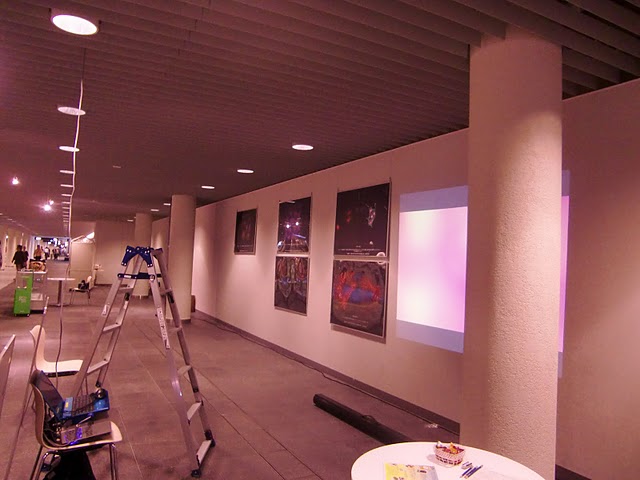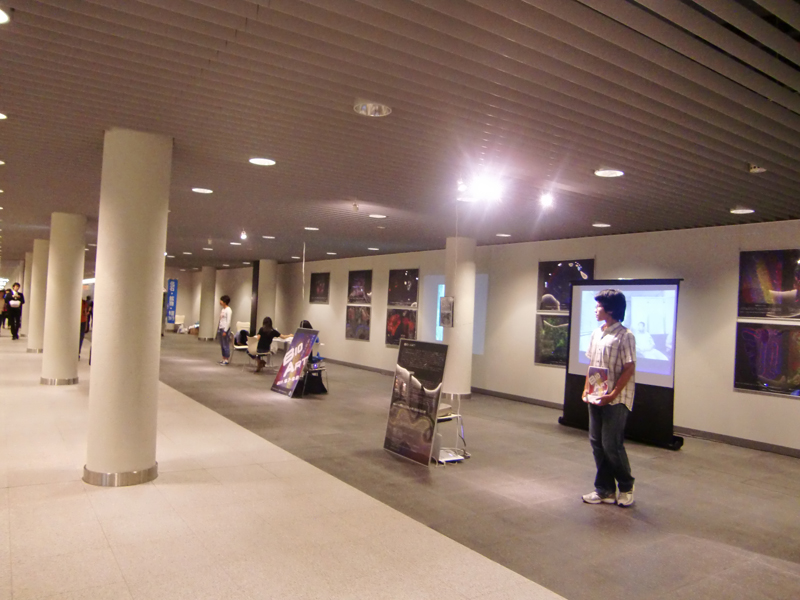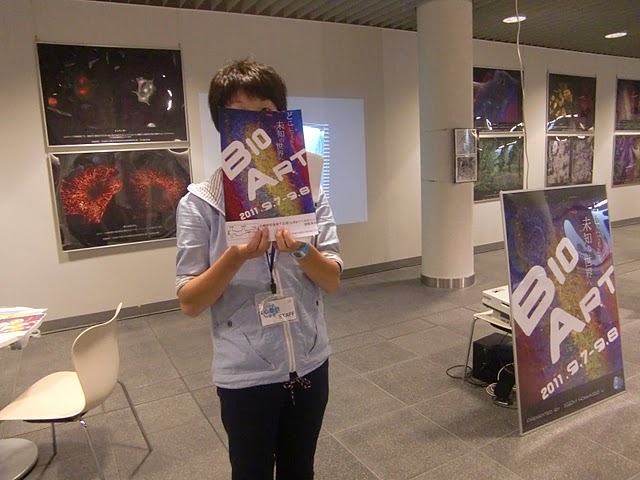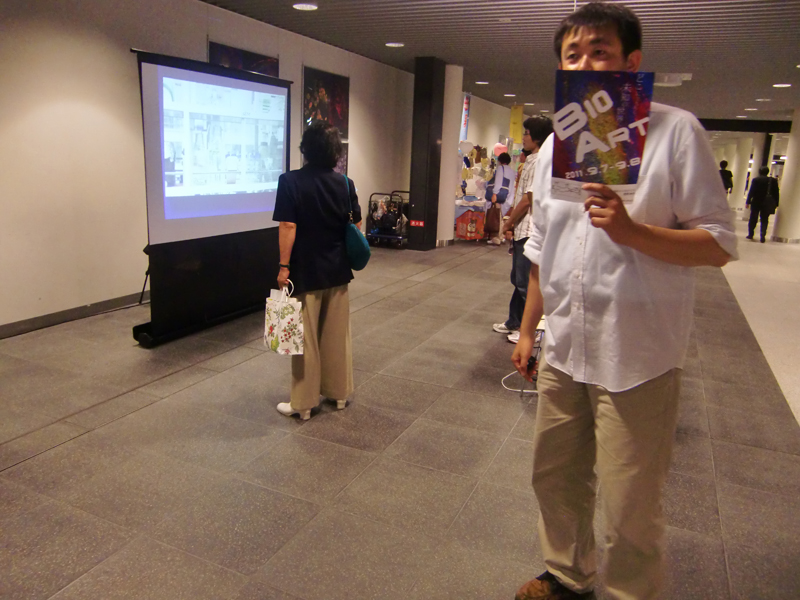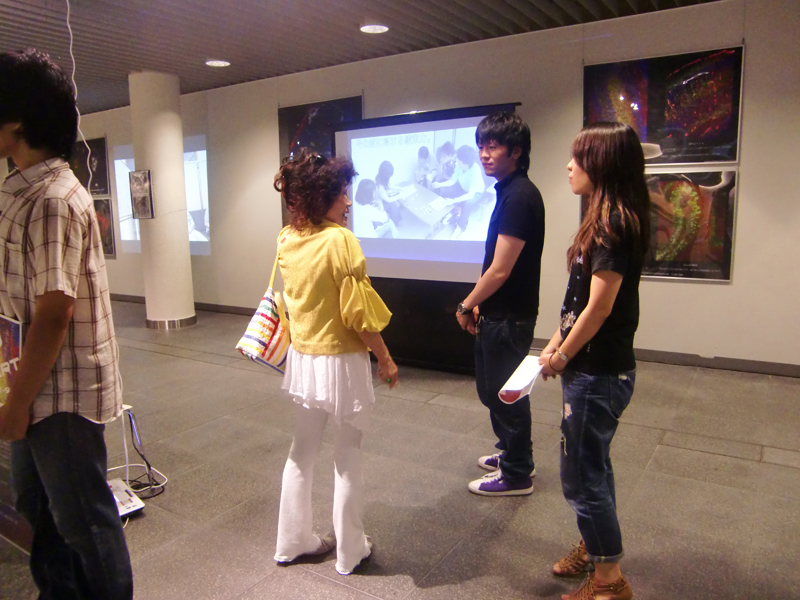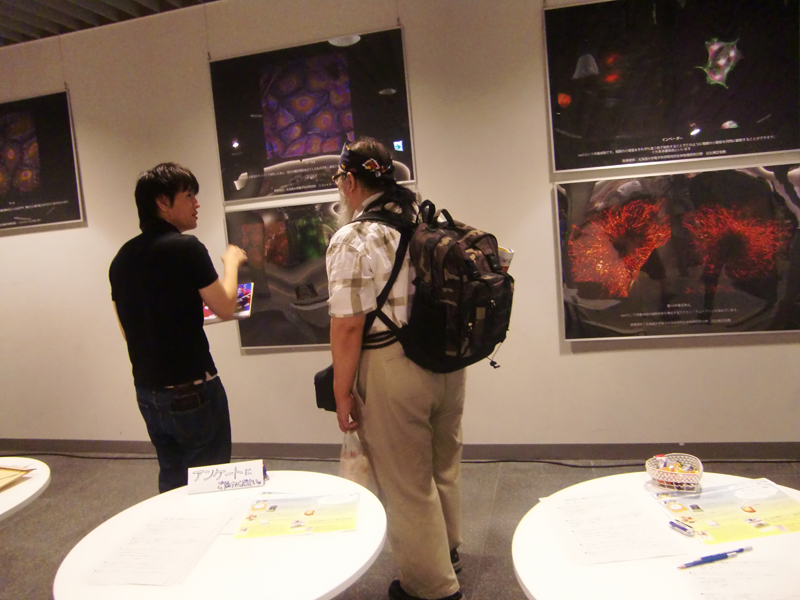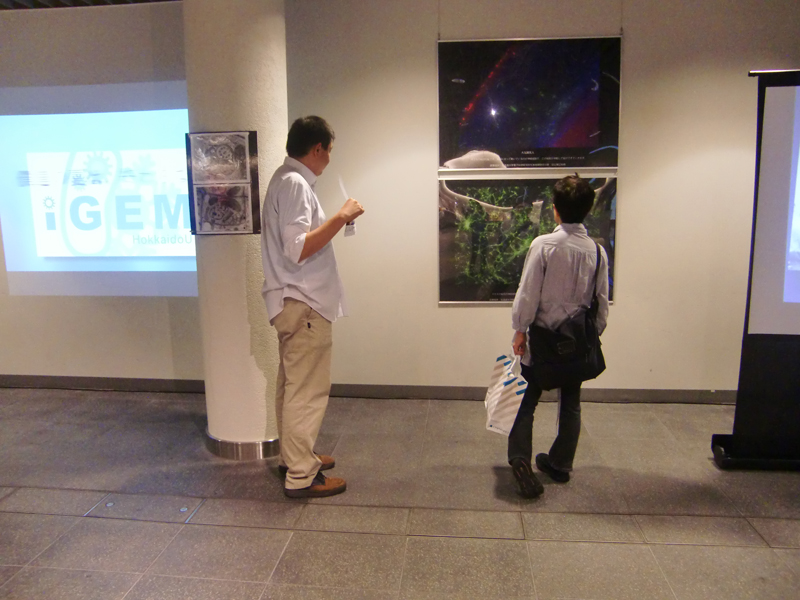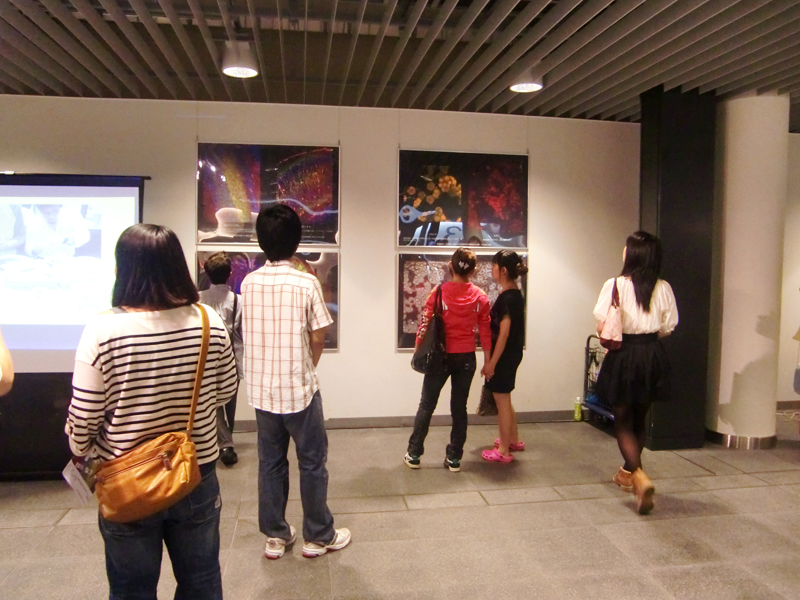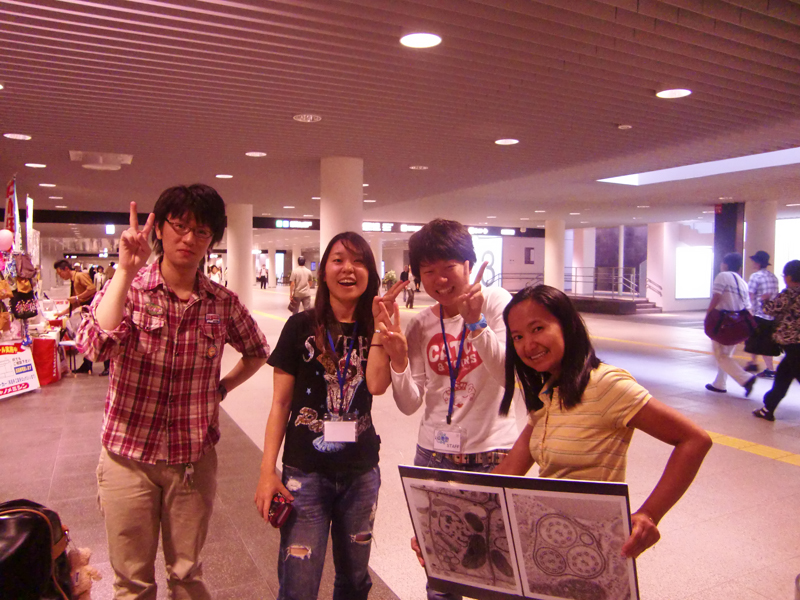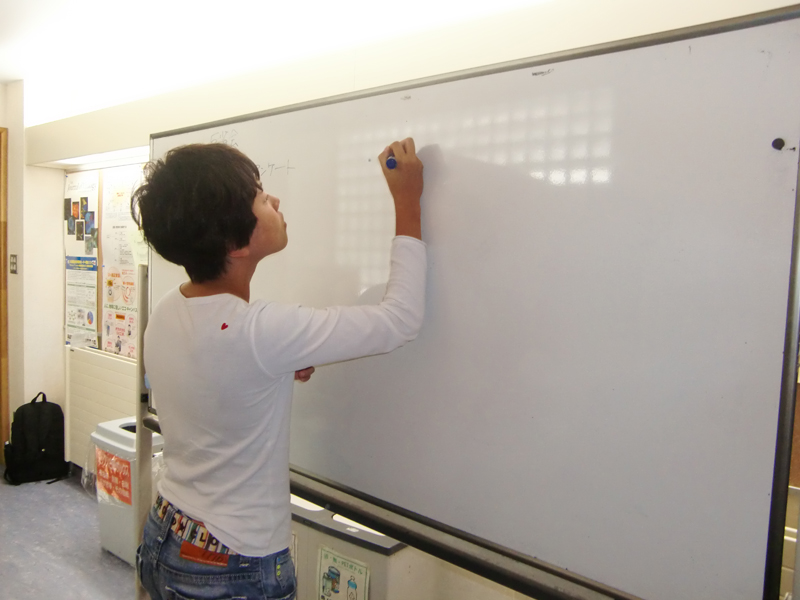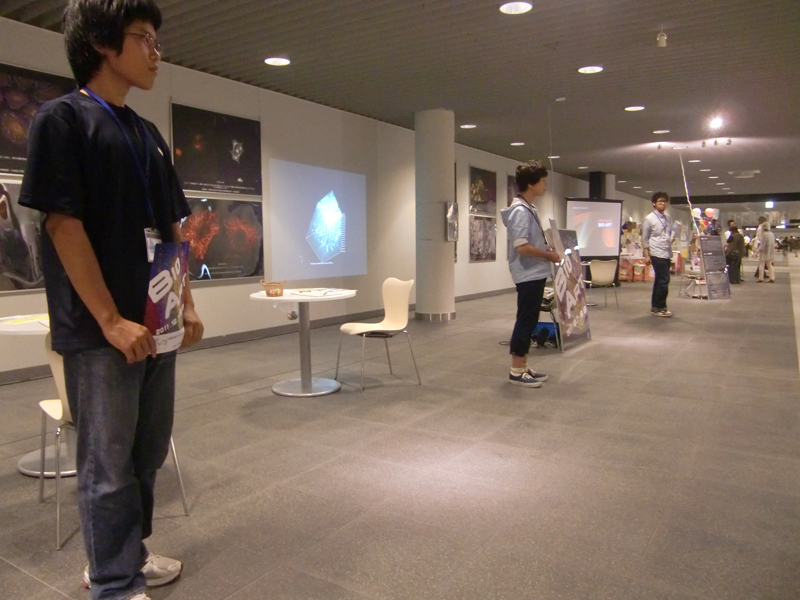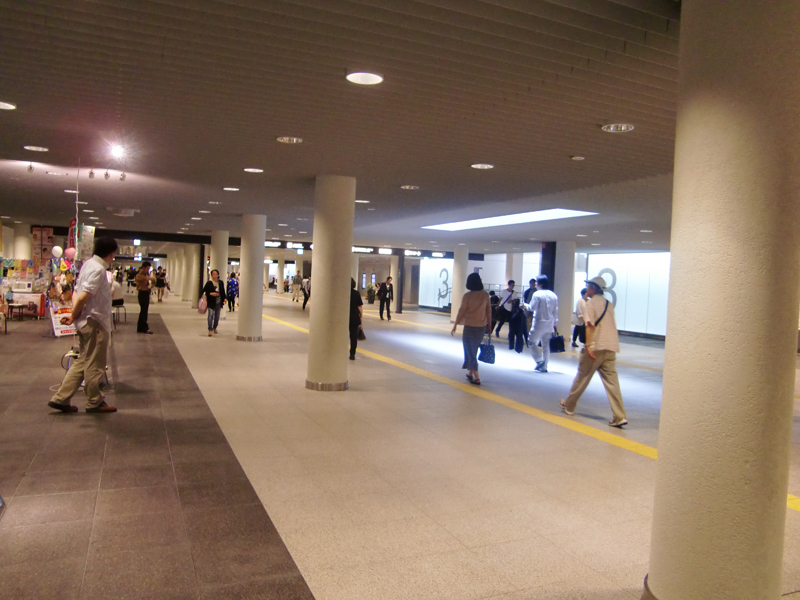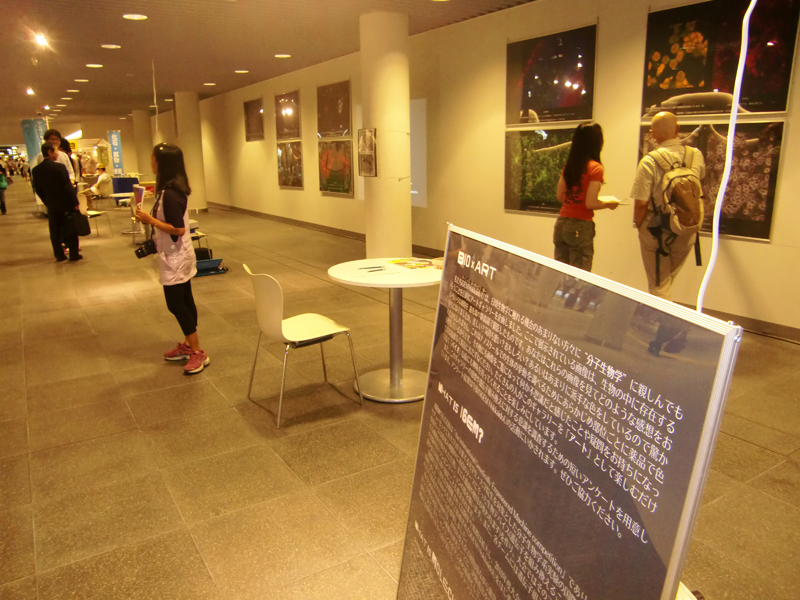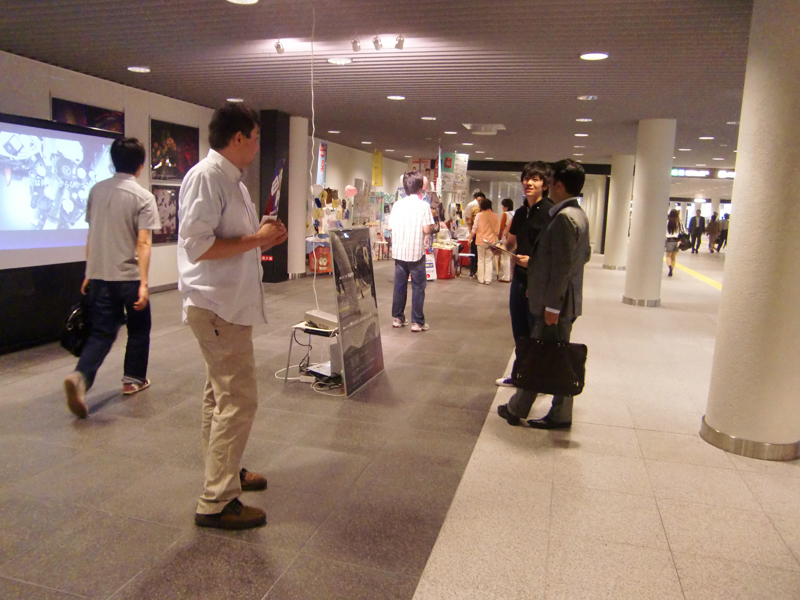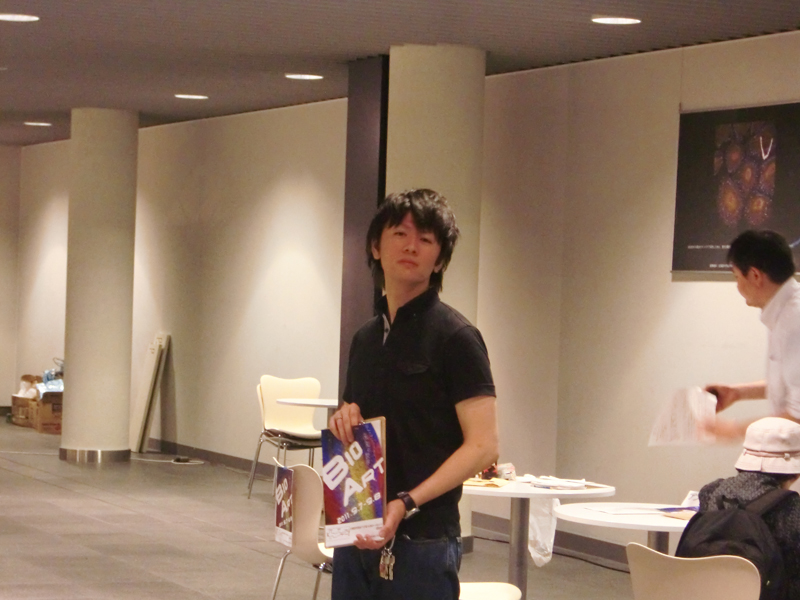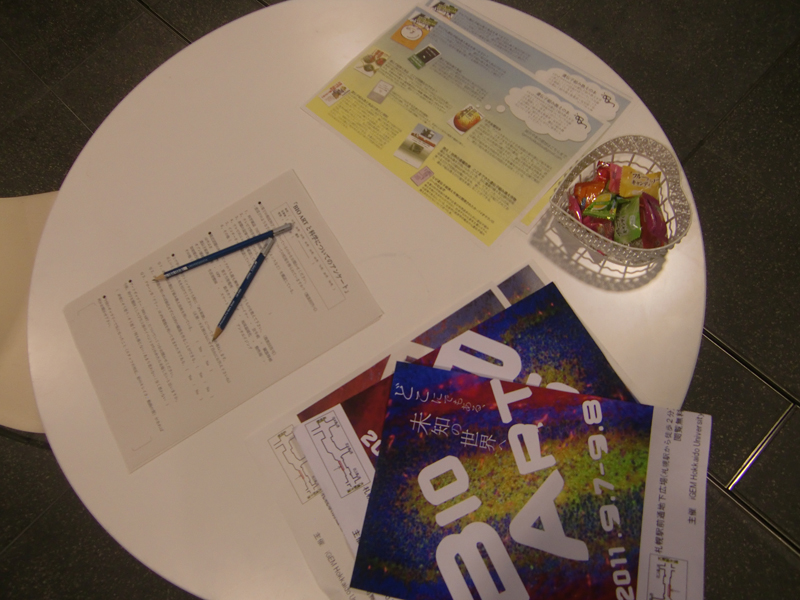Team:HokkaidoU Japan/HumanPractice/Part5
From 2011.igem.org
(→12:00(PM)) |
(→14:00) |
||
| Line 41: | Line 41: | ||
Visitors who answered the questionnaire also increased. (Our service toward visitors was improving.) | Visitors who answered the questionnaire also increased. (Our service toward visitors was improving.) | ||
| - | [[File:HokkaidoU_HP_20.JPG| | + | [[File:HokkaidoU_HP_20.JPG|600px]] |
===15:00=== | ===15:00=== | ||
Revision as of 15:57, 5 October 2011
HokkaidoU Japan
iGEM 2011 Team of Hokkaido University
Contents |
- Top
- Virtual BioArt Gallery
- A society which citizens can think by themselves
- The way to become “citizens who can think by themselves”
- The New Communication Tool, “BIO ART”
- The road to “BIOART"
- What BIO ART was like
- Questionnaire Results
- Review
- To the Future
- Recommended books
- Collaborations
- Acknowledgements
What BIO ART was like
First day(7th/September)
Preparation
We carried big luggage to the “BIO ART” event hall. It was tough to carry A0 size pictures.
Arranging the event hall
We had trouble handling the big pictures. After arranging the pictures, A0 size pictures were very moving.
We set up screens to show videos in two different places. There were recommendation books, questionnaires, and candies on the desk.
11:00(AM)
“BIO ART" started at 11:00(AM) (1hour behind schedule due to having trouble with preparation.) At last, “BIO ART” started with hope and anxiety for visitors.
12:00(PM)
In the first hour, quite a few visitors came to the gallery. Staff felt anxious to communicate with visitors. Because it was lunch time, people walking through the underground walkway came through “BIO ART”. The staff felt anxious.
13:00
English Dojyo at Sapporo Ekimae-dori Underground Walkway We held English Dojyo near “BIO ART” space. English Dojyo is our team's English practice event and we practice speaking English every day to improve our skills. Today topic is about our future dream.
14:00
After lunch time, the number of visitors increased gradually. Visitors who answered the questionnaire also increased. (Our service toward visitors was improving.)
15:00
We were able to get along with elderly woman (madam?) who loved Paris. She taught us how to learn languages and she also said “Cancer is very fearful disease!!” while watching HeLa cells pictures. We were able to hear honest answer from her. We wish we could see her again...
16:00
During this time, we were able to learn a lot from visitors. A male visitor told us that scientists should use science technology in easier way for citizens to understand. He also gave precious advice for our event and our project.
17:00
Before it was time to go home, many elderly people came to the “BIO ART”. We talked with them about some topics, about pictures and videos, toward chat. They said “Wow! How beautiful they are ” and ”You should hold such gallery again!”. These comments are pleased us.
18:00
We took a rest and held short meeting between our shifts. We all did our best to improve our “BIO ART”.
19:00
There were few people in underground walkway in the last hour. Nevertheless, some visitors came to “BIO ART”. One another university student came and said ”You are lucky because you belong to such a good club”
20:00
First day was finished. Total number of visitors were 178. Total number of questionnaires were 45!! Thanks to all visitors.
Meeting for reviewing
After finishing, we held a meeting for reviewing how the day went. To improve “BIO ART” in the second day, we discuss everyone’s shift, how to communicate with visitors, how to explain pictures and videos, good points and bad points. Do our best tomorrow!!
Second day started
To improve negatives from first day, we changed the shift schedule and layout of the “BIO ART” hall. We also keep notes about how the gallery was going. When we noticed something good or bad or when we found something impressive, we decided to write them in the notes. We started the second day of “BIO ART” refreshed and ready to go.
12:00
Though there were many people in the Sapporo Eki-Mae Underground Walkway, few visitors came to the “BIO ART”. (Same as the first day) Staff always thought how to improve our communication.
13:00
This day held English Dojyo at Sapporo Eki-Mae Underground Walkway too. Today topic was ””
14:00
After lunch time, the rate people that visited the “BIO ART” was higher than that of the first day. There were too many visitors to communicate with each person personally. Some staff brought a biology book to learn more in their free time.
17:00
Compared with the first day, we were able to meet many young visitors. Also, many kinds of visitors came to the “BIO ART” gallery.
19:00
The last hour was left. Many visitors answered the questionnaire. All staff spent the last hour enjoying “BIO ART”. Everyone wore a huge smile. The staff notebook was filled with each person's reviews and impressions.
20:00
“BIO ART” was finished!! Total number of visitors were 199. Total number of questionnaires were 56. The two days were a lot of fun. A lot of visitors came to the “BIO ART”.
We recognized the importance of having an opportunity to offer a place to talk about science. All staffs were able to have grand experience. We held a review meeting for the next day.
Final report
Not only to have the visitors enjoy our gallery but what we achieved was big. That is, the way of communication, to hear visitors thoughts directly. Those 2 days made us realized the importance of taking the science out of the lab.
Staff's voice
I should have been more knowledgeable about this subject. There were some questions from visitors that I did not expect. I also felt that dealing with visitors was difficult, such as when to talk to visitors, whether to go toward them and explain or just let them have a look at our exhibitions carefully, and when to have them fill out our questionnaires etc. It was also necessarily to research things besides our gallery.
It was a challenge to change ways of explaining things for visitors from various generations, understandings, and their backgrounds. I think it was a success to offer a place where we can think about science together. I was happy that visitors who are not that interested in science and do not experience that much science were also attracted by our art gallery.
What I felt from this activity is that a lot of citizens are interested in science. Regardless to their knowledge about science, we were able to hear them say “I saw this on newspaper” or “I learned this at the biology class during high school.” And the most impressive thing was that visitors were moved by my explanations of the photos.
If we do the same event next year, there would be some undertakings about the visitors' interest of science to make the gallery more appealing and how to fill out our questionnaires regardless to whether they are interested in biology or not.
 "
"
